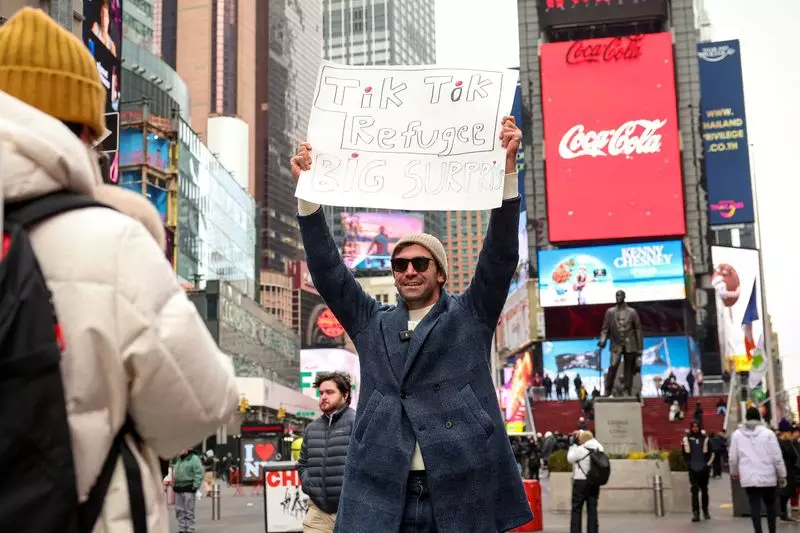In recent days, TikTok has found itself at the center of a storm of uncertainty in the United States. With the threat of a federal ban looming, approximately 170 million American users have faced the possibility of losing access to a platform that has not only transformed social media but has also become a lifeline for small businesses and digital creators alike. The Biden administration’s looming deadline has stirred anxiety not just among users, but also among business partners and marketers, raising critical questions about the intersection of technology and national security.
As the clock ticks down to the deadline set by President Biden, TikTok’s fate hangs in the balance. Under a novel law authored in April, the administration has the authority to shut down the app if it fails to sever ties with its China-based parent company, ByteDance. The implications of this could extend beyond just user access; businesses like Apple and Google could face significant legal ramifications should the app be banned without a preceding grace period. The Supreme Court’s unanimous decision to uphold the potential ban signals the governmental resolve to take a hard line on national security threats, yet the apparent disinterest from the Biden administration to intervene has left significant doubt in the minds of users and stakeholders.
The economic stakes of a TikTok ban are colossal. Analysts estimate that the platform could generate revenues upwards of $20 billion by 2025. If imposed, this ban would not only disrupt a major player in social media advertising but also divert advertising dollars towards competitors like Meta and Snap. In response to the tense situation, marketing firms that heavily rely on TikTok for campaigns have been scrambling to devise alternative strategies. Many executives have acknowledged this urgency, illustrating a palpable climate of alarm as their business models teeter on the brink of upheaval.
As users brace for a potential TikTok shutdown, many have begun exploring alternatives, such as the lesser-known app RedNote. TikTok’s rivals have started to see a spike in their stock prices, reflecting investors’ optimism about potentially capitalizing on the migration of users and advertisers. The typical user base of TikTok, predominantly young and trend-driven, showcases a unique consumer demographic that may easily sway towards rival platforms in search of similar engagement opportunities.
The political landscape surrounding TikTok has significantly altered with the incoming Trump administration, which has expressed interest in resolving the app’s issues politically. This potential change in strategy could reverse the ban should a solution that satisfies national security concerns be found. Trump’s ambiguous assurances and willingness to consider temporary measures could pave the way for a negotiation process that would allow TikTok to continue its operations within the U.S. under new conditions.
Amid discussions of potential bans and closures, there have been whispers of interest from various investors, including Elon Musk, regarding the acquisition of TikTok’s U.S. operations. This notion points to the significant value inherent in the platform, raising speculation about the future roles of private investors or even potential government oversight if new ownership structures emerge. The intricate web of ownership involving institutional firms like BlackRock and the complexities of ByteDance’s corporate structure only add layers of intrigue to an already convoluted saga.
As America grapples with the possible implications of a TikTok ban, the discourse around national security, cultural influence, and economic impact comes to the fore. The outcome remains uncertain, but the episode serves as a crucial reminder of the delicate balance between technology and governance. Furthermore, it underlines the potency of social media not only as a tool for entertainment but also as a battleground for broader political and economic agendas. No matter the resolution, one thing is clear: the future of TikTok will shape the landscape of social media in profound ways, affecting users, businesses, and policymakers alike.

